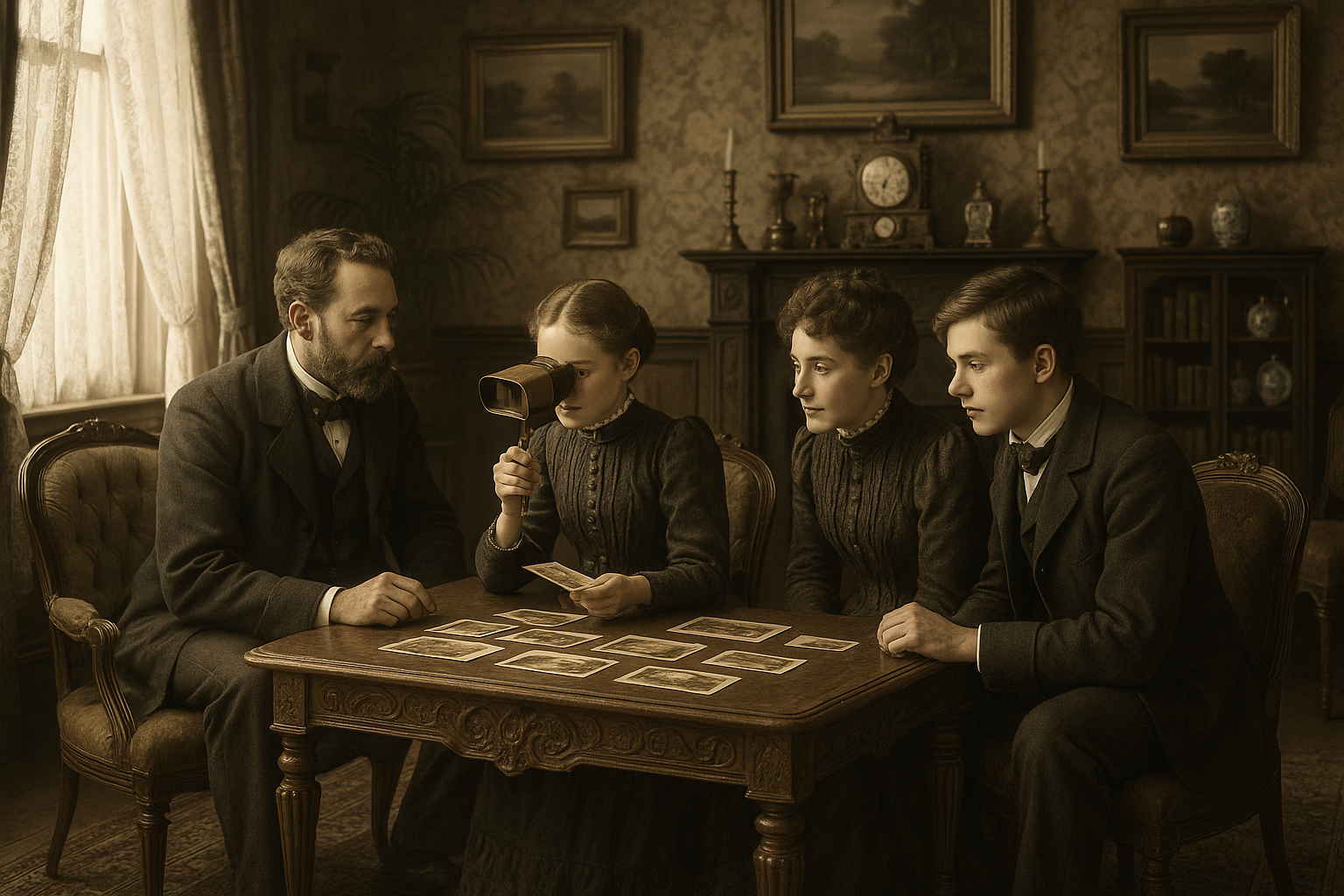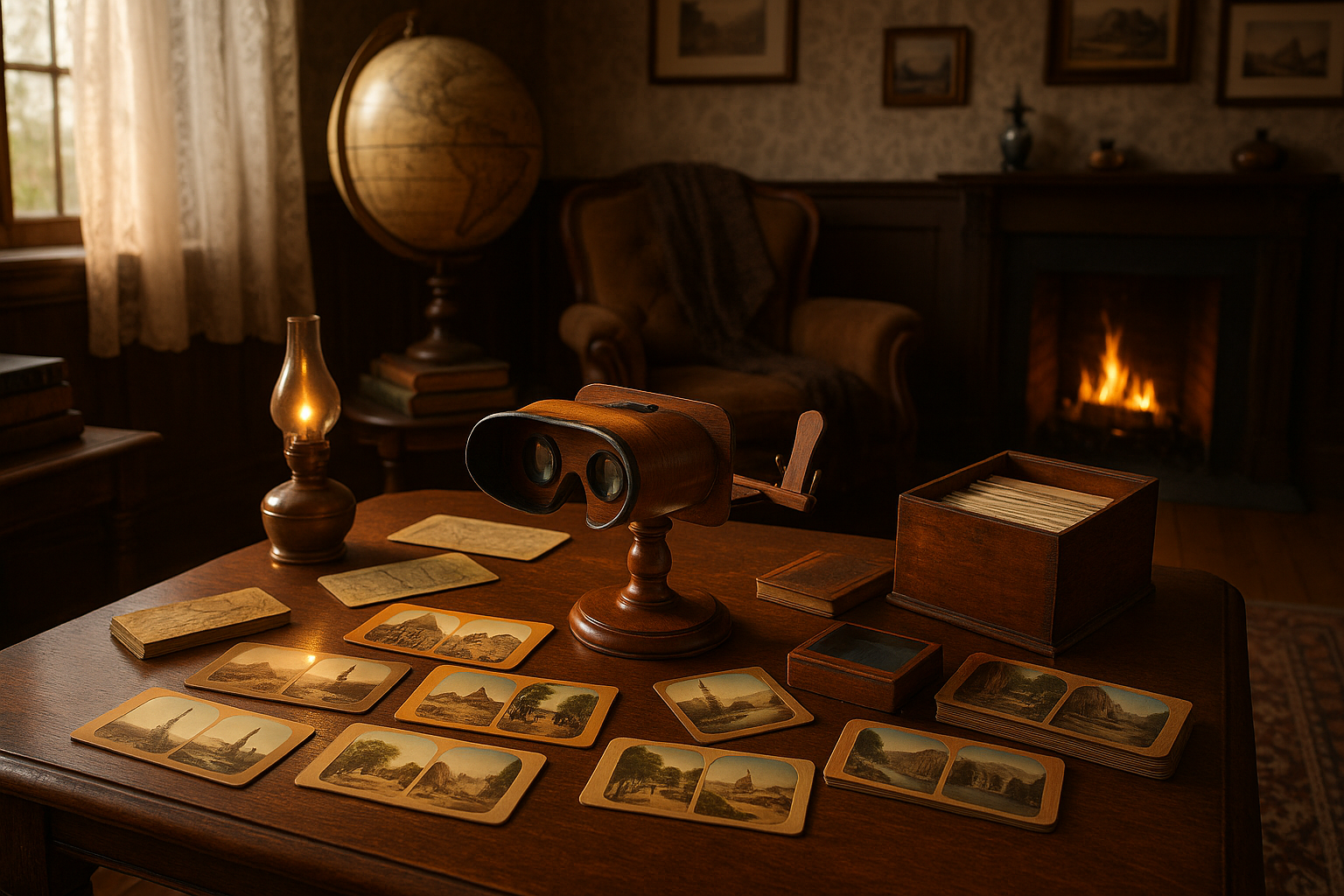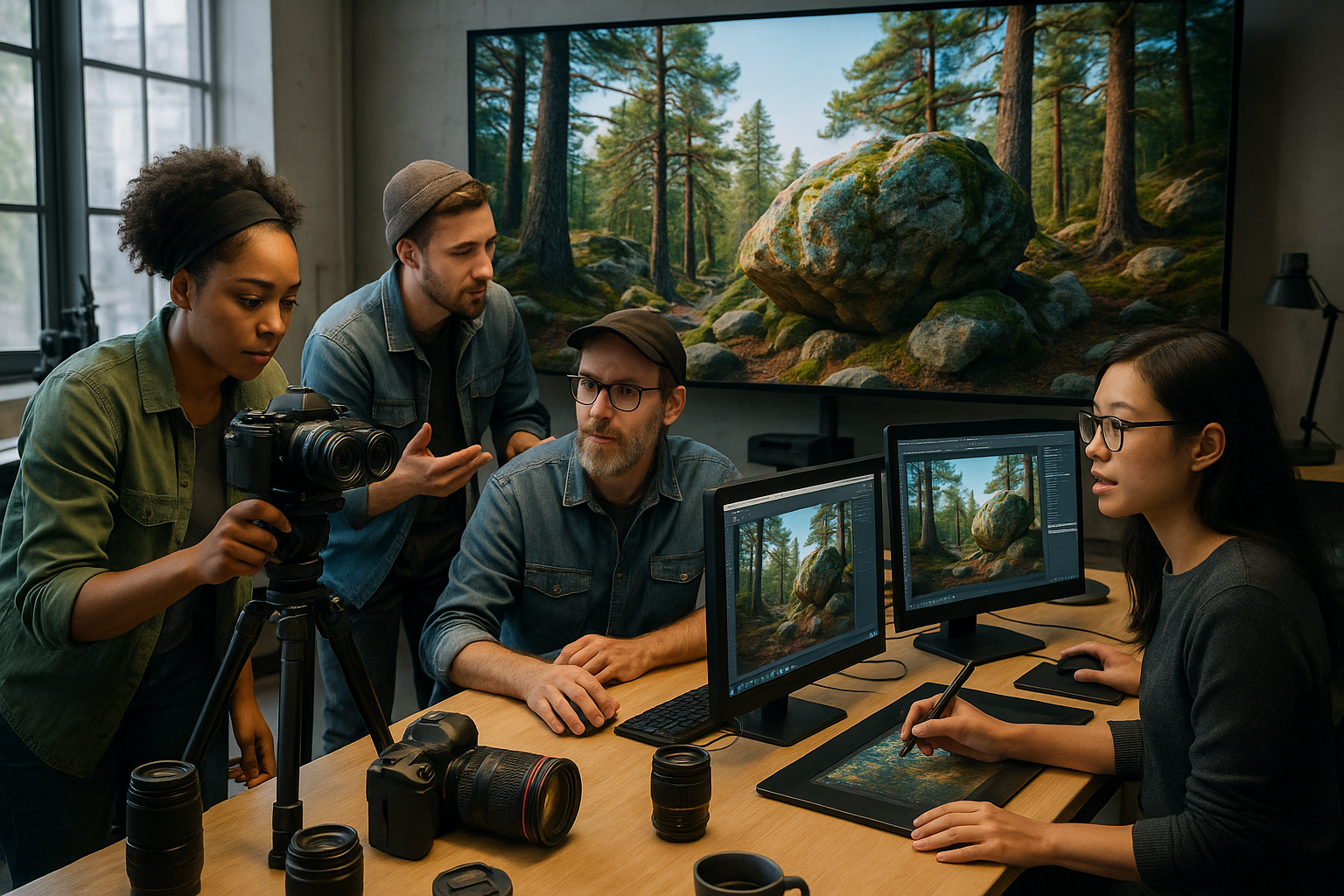The world of visual technology has taken a breathtaking turn with the emergence of 3D illusion technology, transforming how we perceive and interact with digital content.
🎨 The Dawn of a New Visual Era
Since the earliest days of cinema and photography, humanity has been captivated by the possibility of creating lifelike visual experiences. From the first stereoscopic images in the 19th century to modern virtual reality headsets, our quest to trick the eye and mind has been relentless. Now, 3D illusion technology represents the culmination of decades of research, innovation, and creative vision.
This revolutionary technology doesn’t just add depth to flat images—it fundamentally reimagines how we create, consume, and comprehend visual information. Unlike traditional 3D methods that require special glasses or cumbersome equipment, modern 3D illusion techniques can create stunning depth perception using sophisticated algorithms, light manipulation, and clever design principles.
Understanding the Science Behind 3D Illusions ✨
At its core, 3D illusion technology exploits the way our brain processes visual information. Our eyes capture slightly different perspectives of the same scene, and our brain merges these images to create depth perception—a process called stereopsis. But the magic of modern 3D illusions goes far beyond simple binocular vision.
The Neurological Foundation
Our visual cortex doesn’t just passively receive information; it actively interprets and constructs reality based on patterns, shadows, perspective, and prior experiences. 3D illusion technology leverages these cognitive shortcuts to create convincing depth where none physically exists. This includes manipulating:
- Linear perspective and vanishing points
- Atmospheric perspective and color gradients
- Shadow placement and light direction
- Occlusion patterns and object overlap
- Relative size and scaling relationships
- Motion parallax and dynamic elements
The Technical Revolution
Modern 3D illusion technology combines multiple cutting-edge approaches. Lenticular printing creates images that change depending on viewing angle. Autostereoscopic displays produce 3D effects without glasses by directing different images to each eye. Holographic projection systems use light interference patterns to create truly three-dimensional images floating in space.
More recently, computational approaches using AI and machine learning have enabled real-time depth estimation from single camera images, making 3D effects accessible on everyday smartphones and tablets. These algorithms analyze scene composition, identify objects, and intelligently apply depth mapping to create convincing illusions of three-dimensionality.
🚀 Historical Milestones: From Concept to Reality
The journey to today’s sophisticated 3D illusion technology spans centuries of experimentation and discovery. Understanding this evolution helps us appreciate the revolutionary nature of current advancements.
The Early Pioneers
In 1838, Sir Charles Wheatstone invented the stereoscope, the first device to successfully create the illusion of depth from flat images. This simple yet ingenious device presented slightly different images to each eye, allowing viewers to experience three-dimensional scenes for the first time without actually being present.
The View-Master, introduced in 1939, brought stereoscopic viewing to the masses with its iconic circular reels. Though considered a toy by many, it represented a significant democratization of 3D visual technology, inspiring generations of inventors and dreamers.
The Digital Transformation
The late 20th century saw computer graphics revolutionize 3D rendering. Movies like “Tron” (1982) and “Jurassic Park” (1993) showcased the potential of computer-generated three-dimensional imagery. However, these required expensive equipment and specialized expertise, keeping the technology out of reach for average consumers.
The 2000s brought rapid advancement. Autostereoscopic displays eliminated the need for glasses. Smartphones with dual cameras enabled depth sensing. Social media platforms began supporting 3D photo formats. Virtual reality headsets moved from science fiction to consumer reality.
💡 Applications Transforming Industries
Today’s 3D illusion technology isn’t just a novelty—it’s reshaping entire industries and creating new possibilities that seemed impossible just years ago.
Entertainment and Gaming
The entertainment industry has embraced 3D illusions with unprecedented enthusiasm. Video games now feature depth-based interfaces that respond to head movements. Streaming platforms experiment with 3D content that adapts to viewer position. Live performances incorporate holographic elements that blur the line between physical and digital performers.
Theme parks have become showcases for advanced 3D illusion technology, creating immersive attractions where guests can’t distinguish between physical sets and projected environments. These experiences generate emotional connections impossible with traditional media.
Education and Training
Educational institutions leverage 3D illusions to make abstract concepts tangible. Medical students explore three-dimensional anatomical models floating before them. Engineering students manipulate virtual prototypes with natural hand gestures. History comes alive as students walk through reconstructed ancient civilizations.
Professional training has been revolutionized as well. Pilots practice emergency procedures in convincing simulated environments. Surgeons rehearse complex operations on detailed 3D representations of patient anatomy. Emergency responders train for disaster scenarios without physical risk.
Retail and Marketing
Forward-thinking retailers now offer virtual try-on experiences using 3D illusion technology. Customers visualize furniture in their homes before purchasing. Fashion shoppers see how clothes fit without entering a dressing room. Automotive buyers explore vehicle interiors and customize options in real-time.
Marketing campaigns increasingly incorporate 3D elements that capture attention in crowded digital spaces. Billboards create depth effects visible from passing vehicles. Social media ads use parallax scrolling to create engaging narratives. Product packaging employs lenticular printing to tell multi-layered brand stories.
🔧 The Technology Stack Behind Modern 3D Illusions
Creating convincing 3D illusions requires a sophisticated combination of hardware and software working in perfect harmony.
Hardware Innovations
Modern devices incorporate specialized components designed specifically for 3D illusion creation. Depth sensors use infrared patterns or time-of-flight measurements to map three-dimensional space. High-refresh-rate displays minimize motion blur that breaks immersion. Precise eye-tracking cameras adjust perspectives in real-time based on viewer position.
Lenticular lenses remain relevant despite being decades old, now manufactured with precision impossible in earlier eras. These carefully designed optical elements direct different images to each eye without requiring active components or power consumption.
Software Algorithms
Artificial intelligence has become the backbone of accessible 3D illusion technology. Deep learning models trained on millions of images can estimate depth from single photographs with remarkable accuracy. These algorithms identify objects, understand spatial relationships, and apply appropriate depth mapping in milliseconds.
Real-time rendering engines have become so efficient that smartphones can generate complex three-dimensional scenes at 60 frames per second or higher. Advanced shader programs create lighting effects that enhance depth perception. Physics simulations ensure that virtual objects behave convincingly when they interact.
📱 Democratizing 3D: Bringing Magic to the Masses
Perhaps the most exciting development in 3D illusion technology is its increasing accessibility. What once required specialized equipment costing thousands of dollars can now be experienced on devices already in billions of pockets worldwide.
Smartphone Revolution
Modern smartphones have become powerful 3D illusion generators. Multiple camera sensors capture depth information. Powerful processors run sophisticated algorithms in real-time. Gyroscopes and accelerometers enable motion-based parallax effects. High-resolution displays present detailed, convincing imagery.
Social media platforms have embraced these capabilities, allowing users to create and share 3D content effortlessly. What began as simple filters has evolved into sophisticated creative tools that democratize access to technology once reserved for Hollywood studios.
Creative Applications
Numerous applications now empower anyone to create stunning 3D illusions without technical expertise. These tools use intuitive interfaces that hide complex algorithms behind simple gestures and taps. Users can transform ordinary photographs into three-dimensional experiences, create depth-based video effects, or design interactive augmented reality experiences.
The barrier to entry has never been lower, unleashing a wave of creativity as millions experiment with dimensional storytelling. Amateur creators produce content that rivals professional work from just a few years ago, fundamentally changing the media landscape.
🌐 The Future Landscape of 3D Illusion Technology
As impressive as current capabilities are, we’re only scratching the surface of what’s possible with 3D illusion technology. Emerging trends point toward even more revolutionary developments on the horizon.
Holographic Interfaces
True holographic displays—creating three-dimensional images visible from any angle without special equipment—have long been the holy grail of visual technology. Recent breakthroughs in metamaterials and photonic computing suggest this goal may finally be within reach. Prototypes already demonstrate convincing floating displays, though consumer-ready products remain years away.
When perfected, holographic interfaces will eliminate the need for physical screens entirely. Workspaces will feature virtual monitors arranged according to individual preference. Entertainment will become truly immersive without isolating viewers from their environment. Communication will feel more natural as distant participants appear present in three-dimensional space.
Neural Integration
Brain-computer interfaces represent the ultimate frontier in 3D illusion technology. By directly stimulating visual processing areas, these systems could create perfect three-dimensional experiences indistinguishable from reality. While this remains largely speculative, early experiments demonstrate feasibility, raising profound questions about the nature of perception and reality itself.
Adaptive and Personalized Experiences
Future 3D illusion systems will understand individual users deeply, adapting content to personal preferences, visual capabilities, and contextual needs. Someone with depth perception challenges might receive enhanced depth cues. Content could automatically adjust based on ambient lighting conditions. Experiences might evolve based on emotional responses detected through biometric sensors.
⚠️ Challenges and Considerations
Despite tremendous progress, significant challenges remain in 3D illusion technology development and deployment.
Technical Limitations
Current systems still struggle with certain scenarios. Rendering convincing 3D effects for reflective or transparent objects remains difficult. Battery consumption for mobile 3D applications can be prohibitive. Latency between head movement and display update can cause motion sickness in sensitive users. Resolution limitations become more apparent when content must be rendered separately for each eye.
Health and Safety
Extended exposure to 3D content can cause eye strain, headaches, and fatigue in some individuals. The visual system wasn’t designed for the conflicting depth cues present in many 3D illusions—accommodation (focus distance) and convergence (eye angle) often disagree, creating discomfort. Researchers continue investigating long-term effects and developing guidelines for healthy usage.
Accessibility and Inclusion
Not everyone can perceive 3D illusions equally. Individuals with certain visual conditions or those who lack stereoscopic vision cannot experience binocular depth effects. Ensuring that content remains accessible and enjoyable for all users regardless of visual capabilities represents an ongoing ethical obligation for technology developers.
🎯 Practical Tips for Creators and Enthusiasts
For those interested in exploring 3D illusion technology, whether as creators or informed consumers, several principles can enhance your experience.
Creating Effective 3D Content
Successful 3D illusions require careful attention to detail. Ensure adequate separation between foreground and background elements. Use lighting consistently across depth layers. Avoid excessive depth that strains viewers’ eyes. Test content on multiple devices and with various viewers to identify potential issues.
Subtlety often proves more effective than dramatic depth. The human visual system responds better to gentle depth cues than extreme separation. Think of 3D effects as enhancement rather than the primary focus—content quality remains paramount regardless of dimensional presentation.
Consuming 3D Content Responsibly
When viewing 3D content, take regular breaks to avoid eye strain. Ensure adequate lighting in your environment—viewing in darkness increases fatigue. Adjust display settings for comfort rather than maximum effect. If you experience discomfort, stop immediately and allow your eyes to rest.
🌟 The Transformative Impact on Human Experience
Beyond technical specifications and commercial applications, 3D illusion technology fundamentally changes how humans interact with information and each other. This shift extends beyond convenience into the realm of cognitive enhancement and emotional connection.
Three-dimensional visualization helps us understand complex data in intuitive ways. Financial analysts explore market trends as three-dimensional landscapes. Climate scientists visualize atmospheric data as immersive models. Urban planners walk through proposed developments before construction begins. These applications don’t just make work easier—they enable insights impossible with traditional two-dimensional representations.
Perhaps most significantly, 3D illusion technology enhances human connection across distances. When communication includes depth information, remote interactions feel more present and personal. Body language becomes readable. Spatial relationships convey meaning. The technology doesn’t replace physical presence but substantially narrows the experiential gap.
🔮 Embracing the Three-Dimensional Future
The birth of practical, accessible 3D illusion technology marks a genuine inflection point in human visual culture. Like the transition from silent films to talkies, or black-and-white to color, adding the dimension of depth fundamentally expands creative possibilities and audience experiences.
We stand at the beginning of this revolution, not its conclusion. Current capabilities, as impressive as they are, will seem primitive within a decade. The technology will become more sophisticated, more accessible, and more seamlessly integrated into daily life. Future generations will find it difficult to imagine a world where visual content lacked dimensional depth.
For creators, entrepreneurs, educators, and enthusiasts, now represents the perfect moment to engage with 3D illusion technology. The tools exist, the audience is receptive, and the possibilities remain largely unexplored. Those who invest time understanding and experimenting with dimensional storytelling will shape the visual language of the coming decades.
The magic of 3D illusion technology lies not in the tricks themselves but in the enhanced understanding, connection, and creativity they enable. As we continue unveiling this magic, we’re not just changing how we see—we’re transforming how we think, create, and relate to the world and each other. The revolution has begun, and the most exciting chapters are yet to be written.
Toni Santos is a visual historian and artisan whose creative lens is captivated by the forgotten marvels of antique optical devices. Through his thoughtful storytelling, Toni revives the instruments that once transformed light into wonder—camera obscuras, magic lanterns, kaleidoscopes, and other ingenious tools that shaped our earliest visual imaginations.
His journey is rooted in a fascination with how humans have long sought to bend, reflect, and reveal the unseen. Whether tracing the mechanical poetry of 19th-century projectors or illustrating the tactile elegance of early lenses, Toni’s work invites us to see vision itself as an evolving art form.
Blending handcrafted design with historical inquiry, Toni brings to life the material soul of these devices—celebrating not just how they functioned, but what they meant. His creations and curated stories illuminate a world where science, illusion, and beauty were intricately linked through glass and brass.
As the curator of Vizovex, Toni shares detailed studies, reconstructed artifacts, and immersive content that help others rediscover the origins of visual technology and the magic of analog perception.
His work is a tribute to:
The craftsmanship behind early visual instruments
The wonder of seeing through the eyes of another century
The intersection of optics, art, and imagination
Whether you’re a collector, a designer, or someone drawn to the lost poetry of vision, Toni welcomes you into a world where light is a storyteller—one prism, one lens, one forgotten invention at a time.





